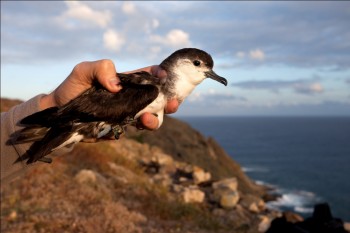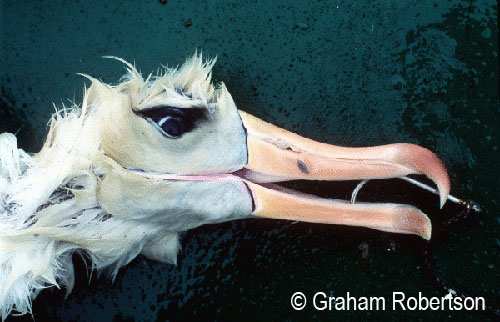Macaronesian Shearwaters change foraging location and take more cephalopods when conditions are poor
Jaime Ramos (MARE–Marine and Environmental Sciences Centre, Department of Life Sciences, University of Coimbra, Portugal) and colleagues have written in the journal Deep Sea Research Part I: Oceanographic Research Papers on foraging changes by Macaronesian shearwaters Puffinus baroli during a North Atlantic Oscillation.
The paper’s abstract follows:
“Changes in oceanographic conditions, shaped by changes in large-scale atmospheric phenomena such as the North Atlantic Oscillation (NAO), alters the structure and functioning of marine ecosystems. Such signals are readily captured by marine top predators, given that their use of foraging habitats and diets change when the NAO changes. In this study we assessed sexual, seasonal and annual (2010/11–2012/13) differences in diet, trophic and isotopic niche (usingδ15N andδ13C values of whole blood, 1st primary, 8th secondary and breast feathers), foraging locations and oceanographic variation within foraging areas for Macaronesian shearwaters' (Puffinus baroli) during two years of contrasting NAO values, and between two sub-tropical islands 330 km apart in the North Atlantic Ocean, Cima Islet and Selvagem Grande. These two locations provide contrasting oceanographic foraging regimes for the birds, because the second colony is much closer to the African coast (375vs650 km), and, therefore, to the upwelling area of the Canary Current. There was a marked environmental perturbation in 2010/2011, related with a negative NAO Index and lower marine productivity (lower concentration of Chlorophylla). This event corresponded to the Macaronesian shearwaters feeding farther north and west, which was readily seen in change of both δ15N and δ13C values, and in a higher intake of cephalopods. Diet and stable isotopes did not differ between sexes. Regurgitation analysis indicate a dominance of cephalopods in both islands, but prey fish were important for Selvagem Grande in 2012 and cephalopods for Cima Islet in 2011. Bothδ15N andδ13C values were significantly higher for Cima Islet than for Selvagem Grande, irrespective of year, season and tissue sampled. SIBER analysis showed smaller isotopic niches for the breeding period. Our study suggests that during years of poor environmental conditions Macaronesian shearwaters shift their foraging location to more pelagic waters, take more cephalopods and overall present a narrower isotopic niche.”

Macaronesian Shearwater, photograph by Luis Ferreira
With thanks to Jaime Ramos.
Reference:
Ramos, J.A., Fagundes, A.I., Xavier, J.C., Fidalgo, V., Ceia, F.R., Medeiros, R. & Paiva, V.H. 2015. A switch in the Atlantic Oscillation correlates with inter-annual changes in foraging location and food habits of Macaronesian shearwaters (Puffinus baroli) nesting on two islands of the sub-tropical Atlantic Ocean. Deep Sea Research Part I: Oceanographic Research Papers 104: 60–71.
John Cooper, ACAP Information Officer, 25 July 2015

 English
English  Français
Français  Español
Español 


